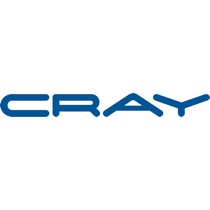
Cray Inc. builds upon a rich history that extends back to 1972, when the legendary Seymour Cray, the "father of supercomputing," founded Cray Research. R&D and manufacturing were based in his hometown of Chippewa Falls, Wisconsin; business headquarters were in Minneapolis, Minnesota.
The 1970s: Revolutionary Ideas
The first Cray®-1 system was installed at Los Alamos National Laboratory in 1976 and cost $8.8 million. It boasted a world-record speed of 160 million floating-point operations per second (160 megaflops) and an 8 MB (1 million word) main memory. The architecture of the Cray-1 system reflected its designer's penchant for bridging technical hurdles with revolutionary ideas. In order to increase the speed of this system, it was built with a unique "C" shape so the integrated circuits could be placed closer together. No wire in the system was more than four feet long. To handle the intense heat the computer generated, Cray developed an innovative refrigeration system using Freon.
Cray made its first international shipment in 1977, to the European Centre for Medium-Range Weather Forecasts, and within two years had opened subsidiary offices in the U.K., Germany and Japan.
The 1980s: Gigaflops and Gallium Arsenide
To concentrate his efforts on design, Seymour left the CEO position in 1980 and became an independent contractor. As he worked on the follow-on to the Cray-1, another group within the company developed the first multiprocessor supercomputer, the Cray X-MP™, which was introduced in 1982. The Cray®-2 system appeared in 1985, providing a tenfold increase in performance over the Cray-1.
In 1988, our company introduced the Cray Y-MP®, the world's first supercomputer to sustain over 1 gigaflops on many applications. Multiple 333 megaflops processors powered the system to a record sustained speed of 2.3 gigaflops.



